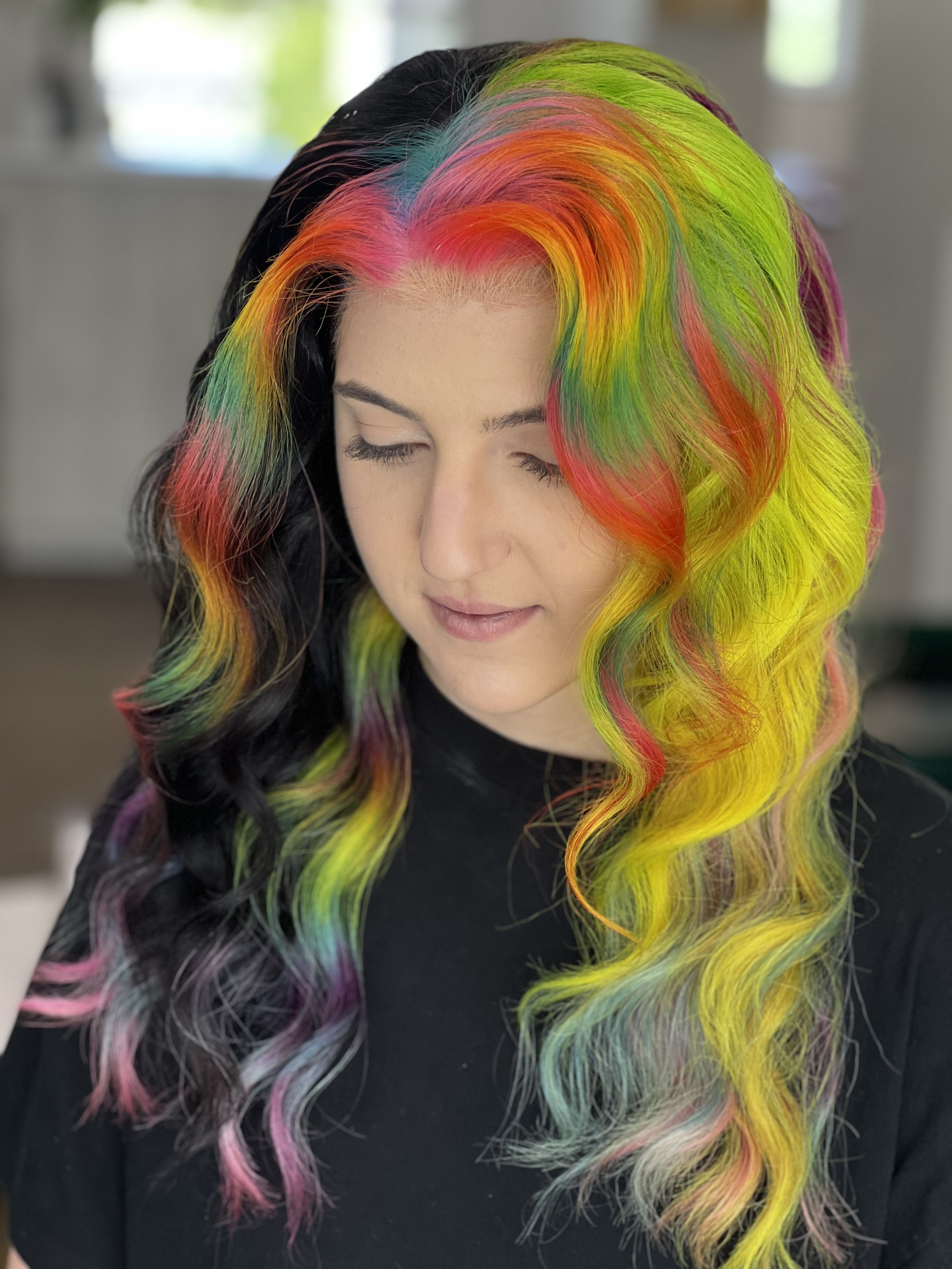Deep-Diving into LGBTQ+ HAIRstory
As a salon, naturally the very first thing we are here to do is create livable, wearable art in the form of hair design. Hair stylists spend years upon years cultivating their artistry, adjusting for the latest trends and advancements, and mastering their respective niches. The education of a hair stylist never stops.
Throughout history, the evolution of the world has been observed to inform the evolution of beauty and fashion, sometimes in very politically and culturally significant ways. Specifically in queer culture, hair design has served as a medium for visibility, solidarity, community building, and activism. In recognition and celebration of Pride Month this year, we look back upon how far we have come, how long we still have to go, and how hair design reflects it all in deeper ways than we may initially notice.
Key Themes and Symbols Throughout History
Androgyny: Many LGBTQ+ individuals have used androgynous hairstyles to challenge traditional gender norms and express a fluid sense of identity. This theme is seen prevalently in the late 80s and 90s, wherein we saw the grunge movement and a resurgence of androgynous fashion. Many LGBTQ+ individuals embraced this androgyny, with hairstyles that blurred the lines between traditional masculinity and femininity. This period also saw greater acceptance and visibility of transgender and non-binary identities, further diversifying the range of hairstyles within the community.
Visibility: Hairstyles have been a way to signal one's identity to others within the community, particularly in times and places where being openly LGBTQ+ was dangerous. The 1960s and 1970s were transformative decades for LGBTQ+ rights, marked by events like the Stonewall Riots. During this time, hair became a powerful symbol of identity and resistance. The long hair of the hippie movement, adopted by many LGBTQ+ individuals, was a rejection of conservative values. The 1970s also saw the emergence of the disco scene, where flamboyant and extravagant hairstyles became a key part of gay male culture.
Resistance and Rebellion: From the punk mohawks of the 1980s to the rainbow hair of today, LGBTQ+ individuals have often used their hair to resist mainstream expectations and assert their presence. In the 1940s and 1950s, the post-World War II era was marked by a return to conservative gender roles, but this also led to the creation of more underground LGBTQ+ communities. Butch and femme identities became more pronounced in lesbian communities, with butch women often sporting short, masculine haircuts and femme women adopting traditionally feminine styles. For gay men, the crew cut and other conservative hairstyles often served as a means of blending in and avoiding persecution.
Celebration and Pride: During Pride events and other celebrations, extravagant and colorful hairstyles are a common sight, reflecting the joy and diversity of the LGBTQ+ community.
Enter: Wigs!
When you think of “wigs” today, you’re probably thinking of something along the lines of the picture at the beginning of this post. But wigs have been around for centuries! Dating back as far as Ancient Greece where they could be used as disguise, and later on gaining the most notable popularity in the 17th and 18th centuries as symbols of wealth and status. They were also used in theatrical productions such as Shakespeare’s Twelfth Night, wherein the term “drag queen” is first coined. Since then, wigs have been such a symbolic staple in the LGBTQ+ community to the point where the word itself is its own slang! As an art form, large theatrical wigs have most recently popularized by modern day drag queens. In drag, some queens switch their hair colors and creations every other appearance, while some are identifiable by their signature color or style. Either way, the wig industry is constantly one-upping itself, with social media being a platform for the never ending stream of new innovations to be seen, and to inspire the next creations to come.
Visibility with Hair Design
Throughout history, it hasn’t always been easy or safe for Queer people to find one another and present themselves authentically in their communities. Hair design today is still ultimately a visible outlet for all humans to align their outer appearance with their inner sense of self. Pride Month is a wonderful time for beauty industry professionals and enthusiasts alike, as it brings LGBTQ+ education to the forefront as an opportunity for all to learn and absorb. For many people, their hair can be a very important aspect of their identity, and there can be a sacredness to the act of modifying it. Whether we cut hair to let some baggage go, or we fill it with colors to signify a joy and freedom in self-expression, the roots of hair (haha) go deeper than surface level. Pride Month is about celebration and recognition, which everyone deserves to live in and feel!

